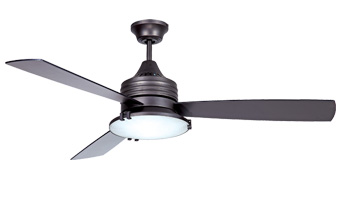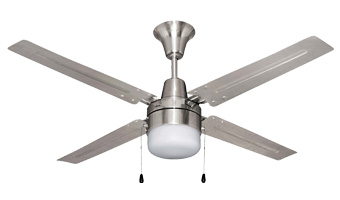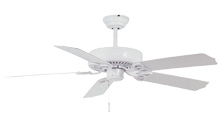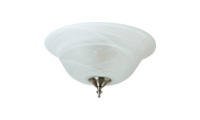Ceiling Fan Basics
When installed and used correctly, ceiling fans are an easy and efficient way to increase air flow and lower utility costs. Their gentle breezes make rooms feel cooler so air conditioners don't work as hard. Ceiling fans are a must-have amenity that keeps residents and guests cool and comfortable.
To make sure your ceiling fans are installed properly and work efficiently for years to come, keep in mind the following:
Location
Ceiling fans can be installed in various rooms and locations. In the center of the room, over the dining room table, or above the bed are all good choices. Knowing the fan's location will help you select the right size, mounting type, and whether or not a light kit is needed.
Size
Having the right size fan maximizes performance and airflow. Fan size is determined by the length of the blades and should be based on the dimensions of the room. Fans that are too small won't circulate enough air, making the room feel stuffy. Fans that are too large will be overpowering and move too much air around the room.
TIP: Always use two fans in larger or rectangle-shaped rooms over 400 square feet.
Follow these guidelines to get the right fan sizes:
| ROOM SIZE | FAN DIAMETER |
|---|---|
| ROOM SIZE>Up to 10' x 10' | FAN DIAMETER>30" to 48" |
| ROOM SIZE>Up to 20' x 20' | FAN DIAMETER>50" to 54" |
| ROOM SIZE>Over 20' x 20' | FAN DIAMETER>56" or larger |
Mounting Options
According to the U.S. Department of Energy, ceiling fans should be installed 8 to 9 feet from floor to blades for maximum comfort and efficiency. Measure the ceiling height to determine the mounting option that works best for your space. Some fans will require a downrod. A downrod is typically used on higher or angled ceilings to create more blade clearance.
When shopping for ceiling fans, choose from these mounting types:
- Single mount fans with three to five inch downrod are for standard eight to nine foot ceilings.
- Dual-mount fans feature a three to five inch downrod for eight to nine foot ceilings. They can also be flush-mounted on lower ceilings under eight feet high.
- Hugger-mount fans are low profile and mount flush on ceilings under eight feet high.
- Extended or angled downrods are used with vaulted or sloped ceilings for improved stability and less wobbling. To get the correct downrod length, subtract eight to nine feet (recommended floor clearance) from your ceiling height. If you have a 12-foot ceiling, you may consider a three to four foot downrod.
Lighting
Adding a light kit may or may not be an option depending on the fan's location and ceiling height. Remember, not all ceiling fans include a light kit, so knowing whether or not direct lighting is needed will help you decide which fans to purchase.
Air Motion
Fans with reversible air motion feature help save energy year-round.
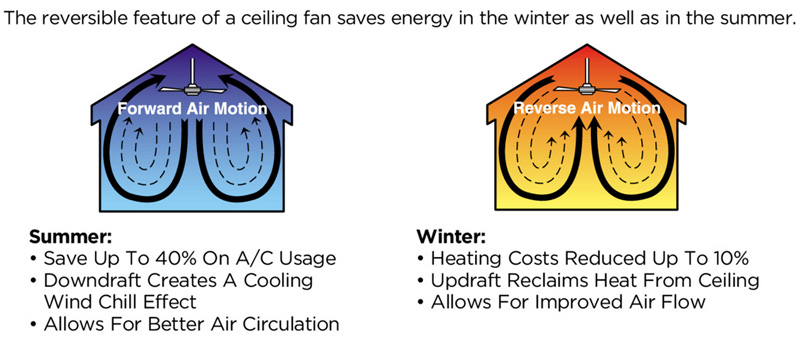
Finish
Your fans should coordinate with your property décor. Ideally, fans should match your door or cabinet hardware. We offer a variety ceiling fans with different of finishes including white, brushed nickel, polished brass, and oil-rubbed bronze.
Fan Operation
Decide which type of fan control works best for your property.
- Remote control ceiling fans allow for easy operation
- Wall switches control both fan and light kit
- Manual pull cord operation of fan and light

